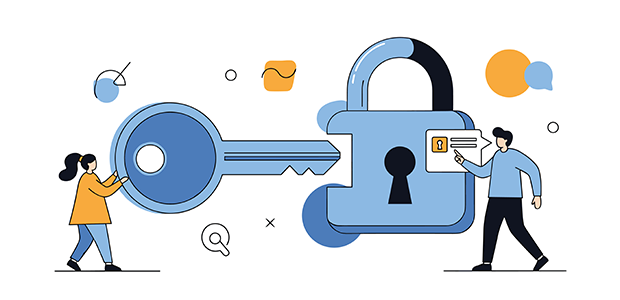
How SMBs can develop a multi-layered approach to cybersecurity
Cyberattacks are no longer limited to large corporations, in fact 42% of small and medium-sized businesses (SMBs) reported experiencing a cybersecurity breach or attack last year. For SMBs, a single breach can lead to severe consequences. In fact, six in 10 (60%) small companies go out of business within six months of a cyber-attack. From ransomware and phishing to leaked credentials sold on the dark web, today’s attacks are more frequent, more sophisticated, and more damaging.
With small teams and limited budgets, SMBs can’t always rely on traditional IT defences. But that’s changed. Website security is evolving with the help of Artificial Intelligence (AI) monitoring tools built into managed hosting platforms. These solutions provide real-time alerts, detect potential vulnerabilities, and offer actionable guidance, making it easier for site owners to stay protected without relying on a dedicated security team.
Start with the basics: essential security layers
SMBs don’t need complex cybersecurity systems, they need smart, simple layers that work together. Like locking the office front door and adding an alarm system. The digital version includes adding firewalls, which block unwanted visitors, anti-virus software, which protects devices from harmful files and regular backups, so the team doesn't lose data if something goes wrong.
These elements form a safety net. If one layer is breached, others help limit the impact. The average cost of the most disruptive cyber breach for small or micro businesses is £7,960, and recovery can take months. In many ransomware cases, SMBs are left struggling without recent backups of critical data, such as customer records, leaving them unable to recover without paying to regain access.
With automated systems, however, data backups are performed regularly and securely without manual intervention, allowing businesses to quickly restore lost or compromised data. This reduces downtime and helps avoid the costly consequences that many SMBs simply can’t afford.
The good news for SMBs is that many of these layers are now built into managed infrastructure and hosting services. Even without in-house IT expertise, SMBs can deploy user-friendly solutions that offer automatic patching, encrypted data transfers, and continuous monitoring. These tools work quietly in the background, reducing manual effort.
Using AI to strengthen security
AI and automation are becoming essential components of website security strategies for SMBs. These technologies help detect, respond to, and even predict threats in real time, bridging the gap between limited resources and increasing risks.
AI-driven tools can identify suspicious activity, such as unfamiliar login attempts or unusual file transfers and trigger immediate alerts or automated responses to block potential breaches. Automated monitoring also tracks leaked credentials on the dark web, an early warning sign that systems may be at risk.
For SMBs, this means less time spent manually monitoring systems or reacting to incidents after they’ve occurred. Many managed hosting platforms and software providers now include AI-powered features like real-time server and application monitoring, automated security patching, and vulnerability scanning to keep websites secure. These systems also provide actionable insights and step-by-step recommendations, helping SMBs address risks quickly without needing deep technical expertise.
The result is always-on protection that doesn't demand deep technical knowledge. By integrating AI and automation into their infrastructure, SMBs gain access to enterprise-level security that scales with their needs, allowing them to stay focused on growth while systems stay protected.
Building a culture of security within small teams
Over a third (39%) of UK SMEs have not arranged cyber security training for their teams. In small teams, the strongest protection comes when security is integrated into daily habits, not just delegated to IT systems.
Simple, effective practices like enforcing multi-factor authentication (MFA) and setting clear access controls can significantly reduce risk. These measures aren’t just technical; they’re cultural signals that security matters at every level of the team.
Effective cybersecurity starts with people. When team members understand why security measures are in place, they’re more likely to follow best practices and spot risks early, especially phishing or social engineering threats. While tools are essential, they work best when combined with an informed and vigilant team.
Creating a culture of awareness doesn't have to be resource heavy. Brief check-ins, periodic reminders, or quick training updates can reinforce good habits without overwhelming small teams.
Transparency also plays a role. As customers become more conscious of how their data is handled, being open about your security approach, even in a small business, builds trust and loyalty over time. And if something does go wrong, having a clear plan for communication and response shows accountability, helping to protect a business’ reputation and maintain customer confidence.
A single cyberattack can have devastating consequences for small and medium-sized businesses, including significant financial losses, damaged reputations, and exposed sensitive customer data. But staying secure doesn't require deep pockets or full-time security teams. AI-driven tools and managed hosting solutions now offer enterprise-grade protection that adapts to the needs and constraints of small businesses.
From automated patching and firewalls to dark web monitoring and phishing prevention, layered cybersecurity provides always-on defence. When supported by employee awareness, this approach dramatically reduces the chances of a successful attack.
For more startup news, check out the other articles on the website, and subscribe to the magazine for free. Listen to The Cereal Entrepreneur podcast for more interviews with entrepreneurs and big-hitters in the startup ecosystem.

